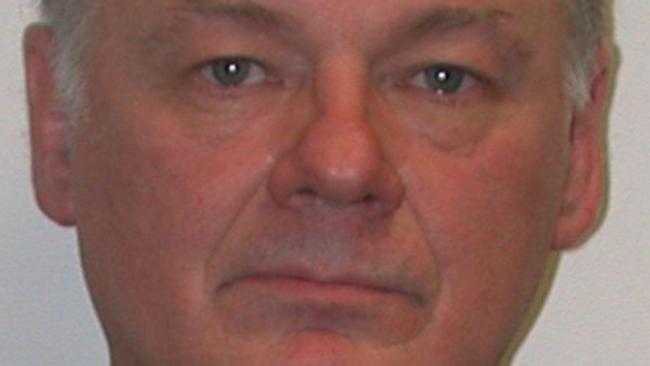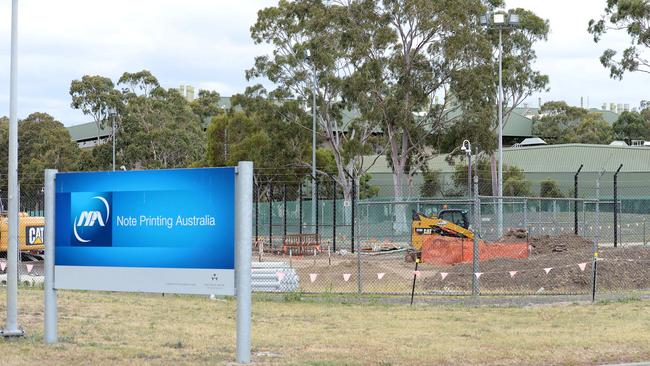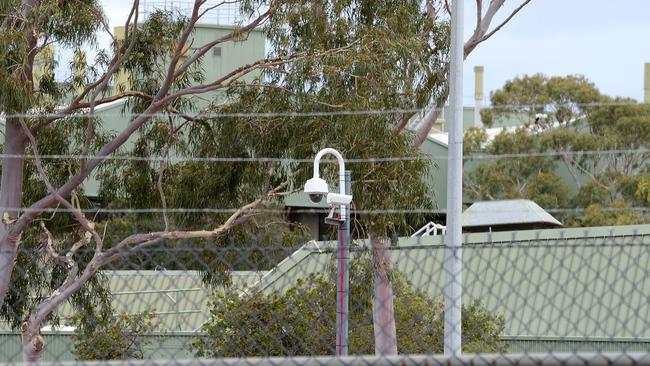Worker Wayne Kevin Jackson charged as up to $1m missing from Reserve Bank’s Melbourne plant
SHOCKING security failings allowed up to $1 million to be stolen from the Reserve Bank’s Melbourne note-printing plant as an official has been charged.

Law & Order
Don't miss out on the headlines from Law & Order. Followed categories will be added to My News.
SHOCKING security failings allowed up to $1 million to be stolen from the Reserve Bank’s Melbourne note-printing plant.
The Sunday Herald Sun has uncovered elementary blunders in the way cash earmarked for destruction at the bank’s Craigieburn currency base was handled.
The Note Printing Australia factory has been the subject of a major Australian Federal Police investigation which led to the charging of senior official Wayne Kevin Jackson.
Jackson, 57, has pleaded guilty to theft and dealing with money suspected of being the proceeds of crime.
He used stolen money to buy a range of luxury items including a $120,000 Mercedes-Benz, a Rolex watch, diamonds and gold ingots and nuggets.
Part of the senior research scientist’s job was to incinerate damaged banknotes.
But there were major security lapses in the area where the cash is destroyed, including:
A CCTV camera placed above a money furnace was not operating;
HARDWARE store padlocks were used to protect the furnace;
KEYS for those padlocks were not logged on an internal register; and
THE area where cash was to be destroyed was not included in the base’s wider security system.

It will never be clear exactly how much money went missing, but some sources say it could exceed $1 million.
The destruction of cash was under the control of three key-holders, but sources have revealed the locks were the kind that might be bought at Bunnings.
They are believed to have been purchased by Jackson.
The Sunday Herald Sun understands the Craigieburn complex had gone through a multi-million-dollar security upgrade in the period around the time of the thefts.
It was revealed at a 2013 court hearing that the thefts were allegedly only uncovered after a staff member found tamper-proof bags of money in a disused office.
Those had been signed off as destroyed almost a year earlier. Some of the money to be destroyed was cash damaged in the widespread Queensland floods of 2011.
Meanwhile, high levels of personal spending by Jackson was not detected.
A forensic accountant found that over three years Jackson had $690,000 from unexplained sources go through his accounts.
Jackson disappeared in 2013 on the eve of court proceedings against him.
He resurfaced in August this year when he walked into a suburban police station and handed himself in.
In September this year, he appeared in the Victorian County Court and pleaded guilty to one charge of dealing with money suspected of being the proceeds of crime and a charge of theft of Commonwealth property.
A plea hearing will be held in February next year.
An RBA spokeswoman said the organisation and Note Printing Australia — a wholly owned subsidiary — always took operational security very seriously.
“Following this matter in 2012, processes and procedures at the bank’s Craigieburn office were reviewed by an independent security specialist and some improvements implemented,” she said.

THE MAN WITH MONEY TO BURN
WAYNE Kevin Jackson was a long-serving, trusted and valued employee of the Reserve Bank. And one with a very big secret.
He was quiet, polite and organised — the kind of unexceptional man his physical appearance indicated.
To some he worked with during his 27 years with the bank, Jackon sold the lie that he was married and living in a fancy bayside suburb.
But the reality was he lived alone in a small unit at Rosanna — and was a cunning thief.
Jackson’s vital job was to research and create banknote security features then test their resilience. This task brought with it a high level of trust.
And obvious temptation.
Jackson’s role also included the destruction of damaged cash at a furnace at the bank’s Note Printing Australia plant in Craigieburn.
Any outsider would assume the strictest of processes would have been in place, but there were surprising opportunities for the light-fingered.
A camera above the furnace was, inexplicably, not operating. And incineration was not instant.
These two factors left open the possibility someone could return and remove money.
Several padlocks had to be negotiated by those involved in disposing of the damaged cash. But the Sunday Herald Sun understands they were run-of-the-mill hardware store locks, bought by Jackson, leaving an opening for a thief to have duplicates cut.
Those keys were also not on an internal register.
For years Jackson, 57, was able to exploit holes in the system to fund a lavish lifestyle.
There were the nights at the luxury Sofitel Hotel and Crown Casino.
When he wanted a new car, Jackson visited a Mercedes-Benz dealership and shelled out $125,000 for one.

Rumours would later emerge of lavish trips to France and Monaco, the high-stakes playground of the rich and famous.
A silver Rolex watch also took his fancy, along with precious stones from the Australian Diamond Company and Hardy Brothers jewellery.
Gold coins and five gold nuggets were among other significant purchases.
If Jackson’s true lifestyle and spending habits had become known, it was almost certain he would have been shown the door at work.
His spending massively exceeded his legitimate income.
A forensic accountant would later tell police Jackson had received funds from unexplained sources totalling $690,953.93 between September 2009 and May 2012.
But as is often the case, Jackson’s offending — and double life — was brought undone by the simplest of finds.
A woman who worked under him found tamper-proof packages of cash hidden in drawers in a disused office.
She realised and later told a court they matched notes she had signed off as being destroyed 11 months earlier.
She suspected it had been taken by Jackson.
The Australian Federal Police was called in and Jackson was charged with theft and dealing with money suspected of being the proceeds of crime.
It was alleged that a subsequent police search of his humble unit found a wall safe concealed by a picture.
Inside it, officers found $40,000 in cash, diamonds, gold coins and ingots.
